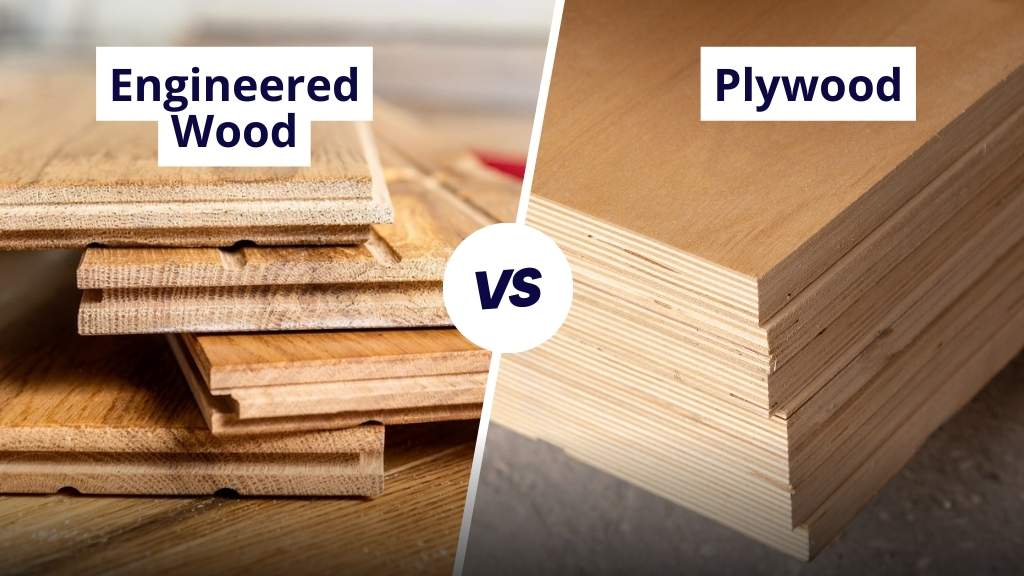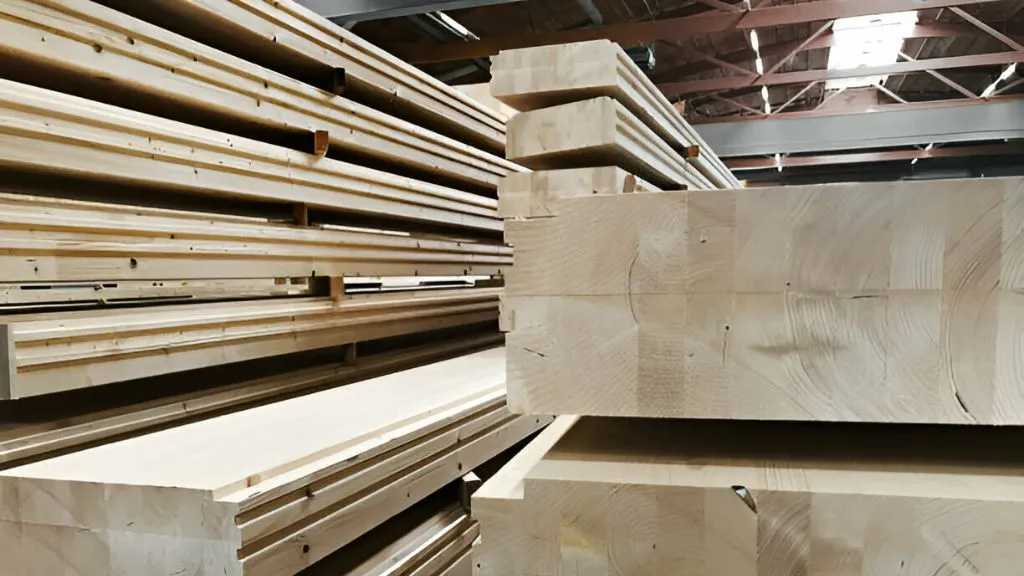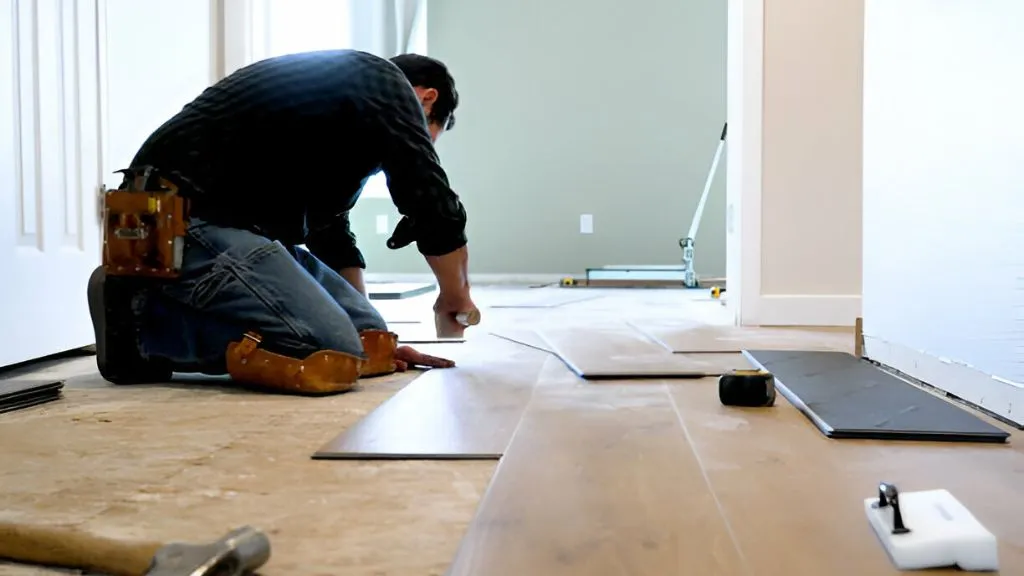
In the world of construction and woodworking, the choice of materials plays a crucial role in determining the success and quality of a project. Two commonly used materials that have gained prominence are engineered wood and plywood. These materials offer distinct advantages and possess unique characteristics that make them valuable in various applications.
Whether you’re a homeowner embarking on a renovation project or a professional in the industry, understanding the differences between engineered wood and plywood is essential. In this engineered wood vs. plywood article, we will delve into the features, benefits, and considerations associated with engineered wood and plywood. But before we delve into plywood vs. wood, let’s understand what they are and their advantages and disadvantages.
What is Engineered Wood?

Engineered wood is a composite material manufactured by binding or laminating multiple layers of wood strands, particles, or fibers together with adhesives and resins. This process creates a strong and stable panel that exhibits properties superior to those of solid wood. Engineered wood products come in various forms, including oriented strand board (OSB), medium-density fiberboard (MDF), and particle board.
Engineered wood is incredibly versatility. It can be engineered to have specific characteristics such as increased strength, dimensional stability, and resistance to warping or shrinking. This makes it suitable for a wide range of applications, including furniture, cabinetry, flooring, and construction. Engineered wood is also often favored for its cost-effectiveness, as it can be manufactured using lower-grade or recycled wood materials.
Advantages & Disadvantages of Engineered Wood
Advantages
- Engineered wood can be engineered to have specific properties, making it suitable for a wide range of applications.
- Its products are often more affordable than solid wood, making them a cost-effective choice. Also, they have consistent strength and performance due to their manufacturing process.
- Engineered wood makes efficient use of wood resources and can be manufactured using lower-grade or recycled materials.
- It is designed to be dimensionally stable and resistant to warping or shrinking.
Disadvantages
- Engineered wood is more challenging to repair compared to solid wood.
- Some types of engineered wood may be susceptible to moisture damage if not properly sealed or protected.
- It also may have limitations in terms of grain patterns and natural wood aesthetics.
What is Plywood?

Plywood is a type of engineered wood that consists of several thin layers of wood veneers stacked and glued together. Each layer, or ply, is typically made from rotary-cut or sliced sheets of wood obtained from a log. The grains of adjacent layers are oriented perpendicular to each other, resulting in a cross-grain construction. This cross-grain arrangement provides plywood with enhanced strength and dimensional stability compared to solid wood.
The manufacturing process of plywood involves carefully bonding the veneers together with adhesives under heat and pressure. This construction method gives plywood its characteristic layered structure. Plywood is widely used in construction, sheathing, furniture, packaging, and decorative applications.
Advantages & Disadvantages of Plywood Wood
Advantages
- Plywood exhibits superior strength and dimensional stability due to its cross-grain construction.
- It is widely used in various applications, including construction, furniture, and packaging.
- Plywood can withstand impacts, bending, and heavy loads better than solid wood.
- It is relatively easy to cut, shape, and install, making it convenient for construction projects.
- The layered structure of plywood can provide a distinctive and visually appealing look.
Disadvantages
- Plywood tends to be more expensive compared to many engineered wood products.
- It is generally heavier than some alternative materials, which can affect transportation and handling.
- The production of plywood involves the use of adhesives and may contribute to the emission of volatile organic compounds (VOCs).
- Plywood sheets are typically available in standard sizes, which may require additional cutting or wastage for specific projects.
After a detailed description of both, now, let’s get to engineered wood vs. plywood.
Engineered Wood Vs. Plywood For Bed: The Differences
Composition
Engineered wood is typically made by combining wood fibers, particles, or strands with adhesives and resins. In contrast, plywood is composed of thin wood veneers that are stacked and glued together. This distinction in composition leads to variations in their structural properties and performance.
Strength and Stability
While both engineered wood and plywood exhibit enhanced strength and stability compared to solid wood, plywood generally possesses greater strength and dimensional stability. The cross-grain construction of plywood counteracts the natural tendency of wood to expand or contract, resulting in a more stable and reliable material.
Manufacturing Process
Engineered wood is manufactured by binding or laminating wood fibers or particles together with adhesives and resins. Plywood, on the other hand, involves the bonding of thin wood veneers. The manufacturing processes for these two materials differ in terms of raw material preparation and the methods used to create the final product.
Appearance
Engineered wood and plywood can have similar appearances, particularly when finished with veneers or laminates. However, plywood often has a distinctive layered look due to the visible grain patterns of the thin veneers. Engineered wood products can come in various appearances, depending on the specific manufacturing technique and the type of wood used.
Cost
Plywood tends to be more expensive than most engineered wood products. The complex manufacturing process of plywood, which includes slicing or rotary-cutting thin sheets of wood, contributes to its higher cost. Engineered wood products, on the other hand, can be manufactured using lower-grade or recycled wood materials, making them more cost-effective in some cases.
Applications
Engineered wood and plywood find applications in different industries and projects. Engineered wood products like OSB, MDF, and particle board are commonly used in furniture, cabinetry, flooring, and construction. Plywood is widely employed in construction, sheathing, furniture, packaging, and decorative applications.
Conclusion – Engineered Wood Vs. Plywood For Bed
In this engineered wood vs. plywood, we looked at their compelling features. These materials have transformed the woodworking landscape with their distinct characteristics and applications, enabling innovative designs and efficient construction practices.
By leveraging the knowledge gained from this exploration, you can confidently choose the most suitable material for your woodworking projects, resulting in outstanding outcomes that blend functionality, aesthetics, and sustainability.






